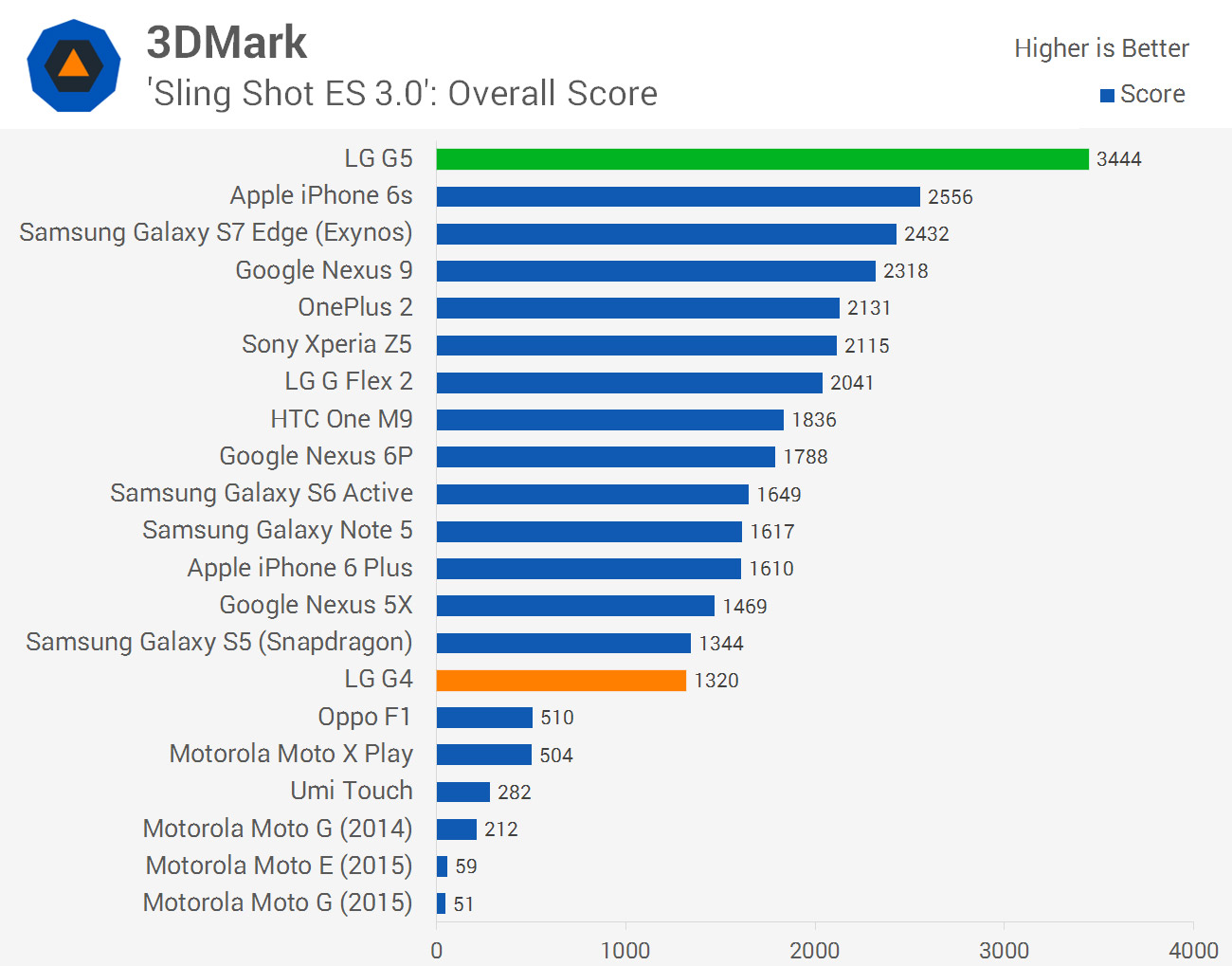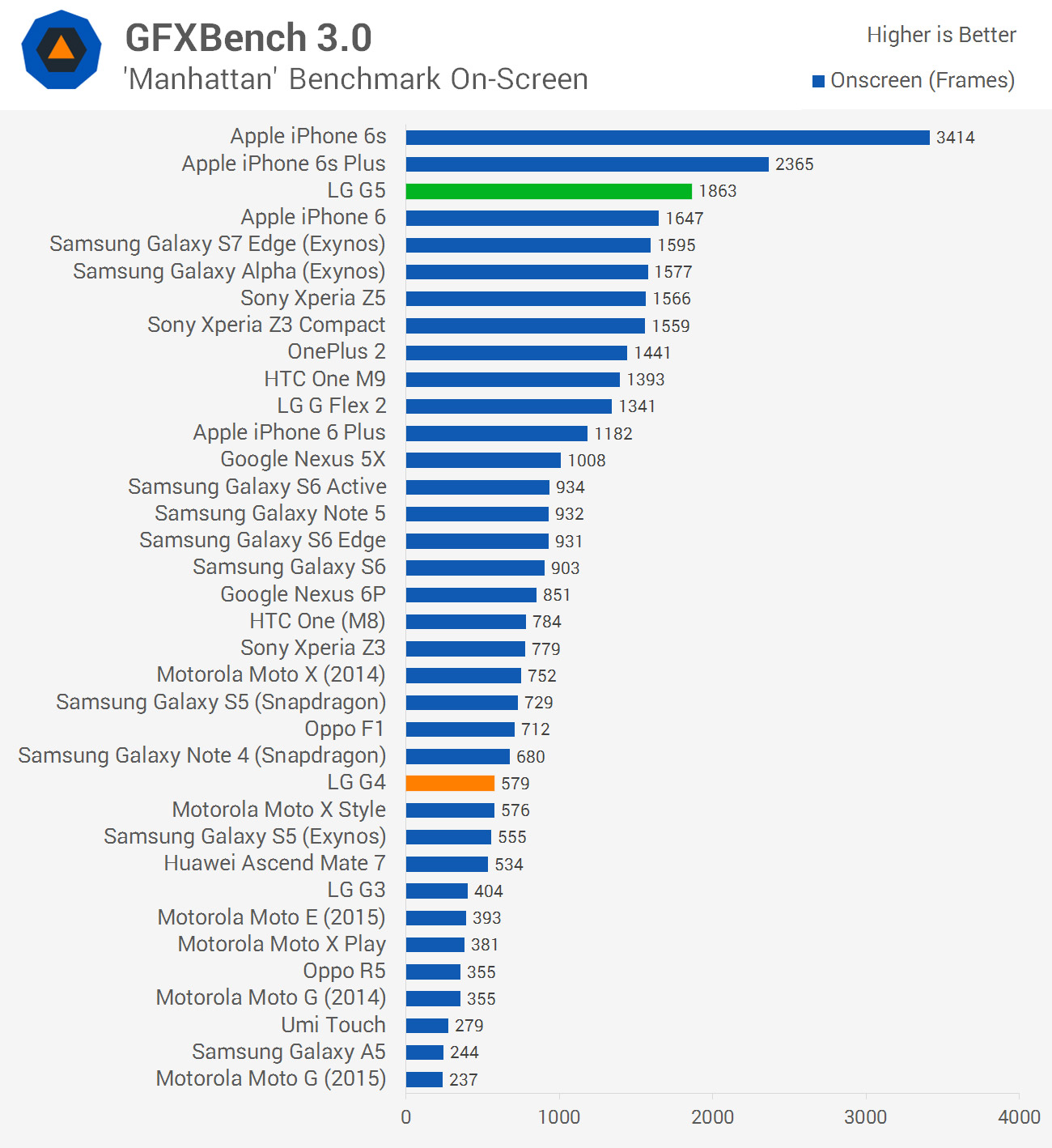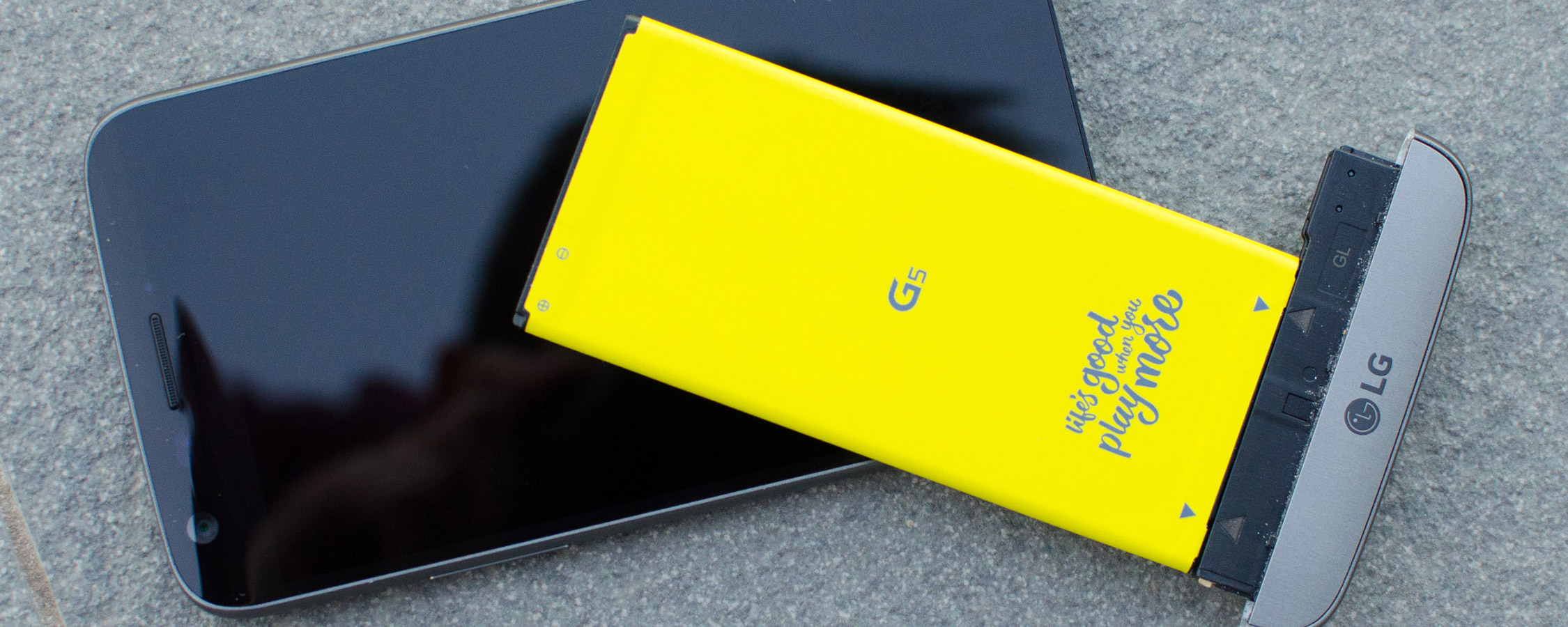GPU, Throttling, and NAND Performance






The Snapdragon 820 with its Adreno 530 establishes itself as the fastest smartphone SoC for graphics. This SoC takes the crown from the Apple A9 with a narrow margin in GPU benchmarks of around 15%.
Compared to the Nexus 6P, which used a Snapdragon 810 and a 1440p display, the Snapdragon 820 delivers 70% better GPU performance overall, which is a huge margin. We're also seeing 35% better GPU performance than the Samsung Galaxy S7 Edge, which indicates the Adreno 530 is a good bit faster than the Mali-T880 MP12. This allows the LG G5 to keep above 60 FPS pretty much across the board in games available in the Play Store.
Compared to the Snapdragon 801, performance is in the range of 2.5x, which shrinks down to around 2x when moving from a 1080p smartphone to a 1440p smartphone.


Aside from the iPhone 6s, which uses a display with a much lower resolution, the LG G5 posts the bests sustained on-screen graphics performance of any smartphone I've reviewed recently. The sustained score in GFXBench was over 50% better than the Samsung Galaxy S7 Edge, due to throttling by just 16% after 25 minutes, rather than 43% like we see from the S7 Edge.
This is a complete turnaround in form for Qualcomm after the really poor showing from Snapdragon 810 devices. The company clearly listened to complaints and has tweaked their SoC's performance effectively.


The G5 posts very good NAND performance that equals the Samsung Galaxy S7 Edge. I'm glad that LG didn't focus on just sequential performance; random performance is just as good from the internal 32 GB of storage you get in the G5.
There's also a microSD card slot available, which can boost the storage of the G5 significantly at a low cost. Unfortunately, LG doesn't support Android 6.0's adoptable storage for some bizarre reason, so there is no way to easily use the microSD for storing apps. That said, performance from a microSD will typically be significantly worse than the internal eMMC, so in some ways it's best not to install apps on the microSD card.
